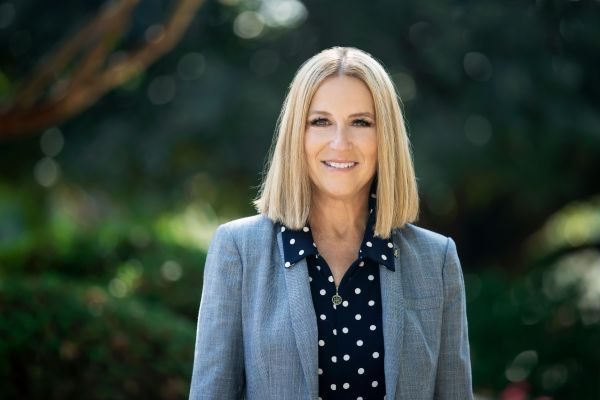Reaccreditation Mission Accomplished, MC’s SACSCOC Liaison Hands Reins to New IE Assistant Provost

Hosting site visitors from the Southern Association of Colleges and Schools Commission on Colleges on the Mississippi College campus for the institution’s decennial review is like visiting your favorite grocery store the day after the manager has rearranged the entire inventory.
Everything you want is still there – it’s just in a different place.
The analogy proffered by Debbie Norris, dean of the Graduate School and associate provost at MC, brings to mind an ever-changing process that requires complete transparency in all of the University’s educational programs.
She should know. Norris has successfully steered Mississippi College through three SACSCOC decennial cycles – a record for the Christian institution. During the last week of March, she hosted eight site visitors on the Clinton campus, her final full-time duty for MC before handing reaccreditation leadership responsibilities to Keith Randazzo, her understudy for the last three-and-a-half years.
“The process naturally changes – it doesn’t stay the same,” said Norris, who helmed MC’s reviews in 2002, 2012, and now, 2023. “They’re still looking at everything, but it has been different each time.”
No matter the alterations, Norris has proven ready for the task. When the SACSCOC On-site Reaffirmation Committee wrapped up its work on March 29, it notified MC that SACSCOC is moving forward with the University’s accreditation status for the next 10 years. Final approval is anticipated by the end of the year.
There are a few constants to the institutional review process. Norris said that for every SACSCOC-accredited institution, the rules are essentially the same.
“The process is made up of a review of the institution to make sure that it is meeting the guidelines that other, like institutions have,” Norris said. “All of the universities in the Southern Region have the same rules to follow, no matter their size, including community colleges, too.
“But here’s where the difference occurs – the people who visit your campus are from peer institutions. That’s important because they can reference what they see more easily. Aside from the QEP lead reader, whom we chose based on her expertise in advising, we didn’t have anyone from a public institution on our review team.”
Mississippi College was first accredited by the Southern Association of Colleges in 1922 and has historically fared well every time it has been reviewed. Norris recently unearthed an article written shortly after MC’s initial accreditation that stated, “Our entrance into this Association will mean more to Graduates of Mississippi College than to any other group of men.” (Although MC was coeducational at its inception, by the mid-1850s, women attended Hillman College, a partner institution in Clinton, until 1942, when the two merged and MC became coeducational again.)
Despite the antiquated language, the story summed up the intrinsic value of SACS accreditation even a century ago. “It will mean that Mississippi College will be in a position for cooperation with the very best schools in the Southland, and that we share mutual benefits with them for the purpose of elevating the standards of scholarship.”
Indeed, during their trips to Clinton throughout the ensuing decades, SACSCOC site visitors have become accustomed to encountering academic professionals well-versed in their institution’s mission and vision and dedicated to providing the best learning environment for students.
“If an institution is going to offer students federal financial aid, it has to be accredited by an institutional accreditor like SACSCOC,” Norris said. “That’s a pretty good reason to go through this process. It also validates what we do as an institution – other employers recognize our students’ work as having graduated from an accredited institution.
“The standards are there to make the institution better. That’s what we want.”
The importance of SACSCOC reaccreditation cannot be overemphasized. Successful reaccreditation is a statement of the institution’s continuing commitment to quality and integrity and its capacity to provide effective programs and services based on agreed-upon accreditation standards.
Norris said it requires a great deal of teamwork.
“Many people associate SACSCOC reaccreditation with me because I’ve been doing this here for 30 years,” she said. “This is not a one-person process. This involves the whole institution. We’ve done well each time we’ve been reviewed because we all have adhered to the standards. It depends upon everybody.
“The reviewers look at every component of the institution – the physical plant, finances, the library, student affairs, missions – everything. Academics is a big part of that. They look at our faculty; they look to see how our students are achieving. It’s a comprehensive review of the institution. All I’m doing is standing in front, banging the drum.”
She said Mississippi College has enjoyed sustained SACSCOC reaccreditation success primarily because of faculty and staff buy-in.
“Our deans have been helpful and supportive of the process,” she said. “Our academicians do an excellent job with their assessments, and those reports are offered as evidence.
“The site visitors even meet with a group of College Board Members, which is a big part of this process. They meet with students. It truly is a comprehensive review.”
The main difference in the reaccreditation process each decade is the roster of peer reviewers, which changes from cycle to cycle.
“When you change out the people, they may still have the same standards to review, but they may ask you different questions, or they may ask to see different people,” Norris said. “These reviewers don’t get paid. They volunteer because they believe in the process. And MC has a number of people who serve as SACSCOC site visitors as well.”
Norris often joked that when the site visitors leave, she would follow them out the door. While she has made good on that promise – Norris officially retired effective March 30 – she didn’t leave the institution’s SACSCOC ship rudderless.
Randazzo, MC’s new assistant provost for institutional effectiveness, took over as SACSCOC liaison on April 1. As director of institutional effectiveness, he has completed SACSCOC training and worked hand-in-hand with Norris for more than three years to prepare for the 2023 review. Of about 30 standards MC had to answer during this site visit, Randazzo handled six.
“Our job is to be familiar with everything,” Randazzo said. “I entertained them in several areas, including questions about overall organizational components, how we do all of our assessments, and how we do things to meet our DOE standards.
“We were playing utility infielder, ensuring everyone had what they needed, answering any additional questions, and helping those going into conference with the reviewers.”
He said having an experienced leader with a steady temperament like Norris makes a remarkable difference in an institution’s preparedness for the site visit.
“It cuts down on the level of anxiety campus-wide,” he said. “I’ve gone on other visits with a leader who didn’t have much experience with SACS, who had never been tested, and there was a lot of uncertainty. Preparing for our visit, it seemed that everyone who had a conversation with her about SACSCOC left feeling more confident.”
Randazzo seeks to emulate that quality. He initially approached Norris with a request to shadow her to learn more about institutional assessment. Soon enough, he spent 10 to 20 hours a week with her, soaking up institutional knowledge and witnessing how she maneuvered through SACSCOC requirements.
“She is well thought of within the SACSCOC organization,” he said. “She has connected me with people who work for the organization and who are in similar roles at other institutions. I’ve gone on several site visits and done several trainings.
“I’m as confident in this role as you can be before you actually do it.”
With successful SACSCOC reaccreditation completed, Randazzo said he gave himself about 12 hours to celebrate the landmark achievement. Then it was back to institutional review planning – this time, for the Department of Education’s required five-year standards report.
Meanwhile, Norris isn’t completely done with the process. Still a member of the SACSCOC Board of Trustees representing Mississippi, she will be at the December meeting in Orlando, Florida, when the board will vote to give final approval over MC’s reaccreditation status.
Until then, she’ll enjoy her separations from SACSCOC leadership at Mississippi College.
“When you’re over assessment at an institution like I was, when people see you coming, they don’t just say, ‘Hey, Debbie,’ they automatically think, ‘What reports haven’t I gotten to her?’” Norris said with a laugh. “It’s nice for them not to see assessment or not see SACSCOC requirement when they see me.”
“I don’t think people realize exactly what Dr. Norris did for our University and for SACS in that role for so long,” Randazzo said. “You only have one person on your campus other than the president who can go out and communicate with SACS, and that’s her. I’ve seen many places, but I’ve never seen anyone who’s done it as well as her.
“My only complaint as I move into this role is that she made it look a lot easier than it was. I wish she had made it look a little harder.”
Sign-up For Our Newsletter
Get the latest news about Mississippi College delivered right to your inbox by subscribing to the Along College Street e-newsletter.


